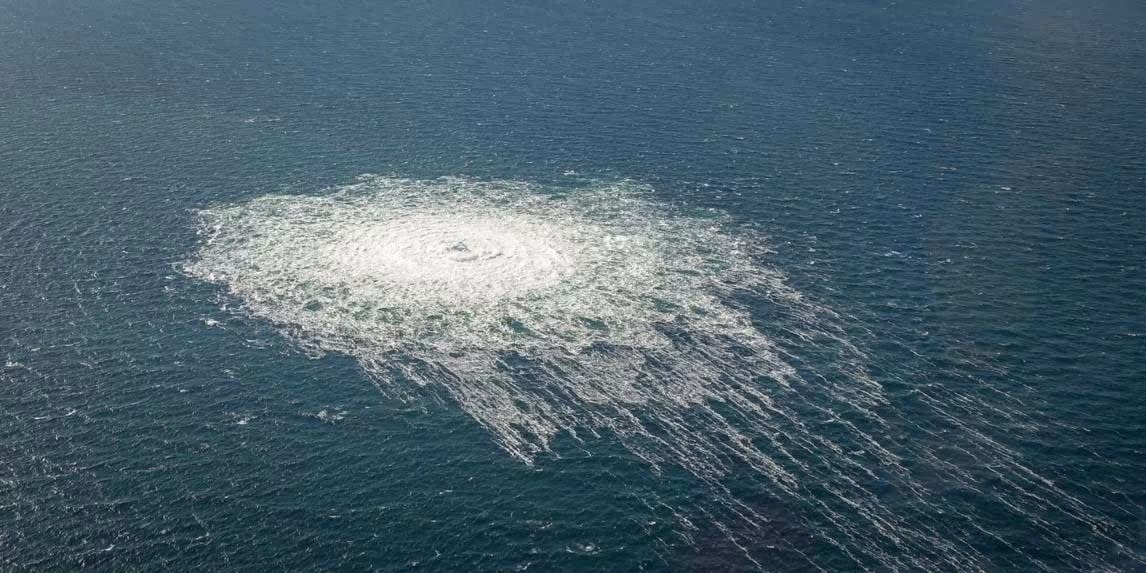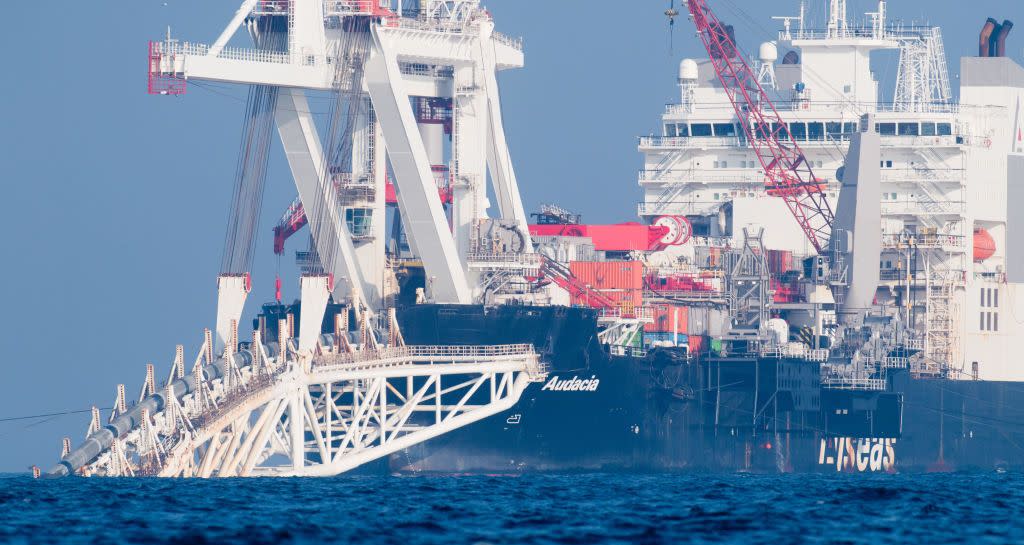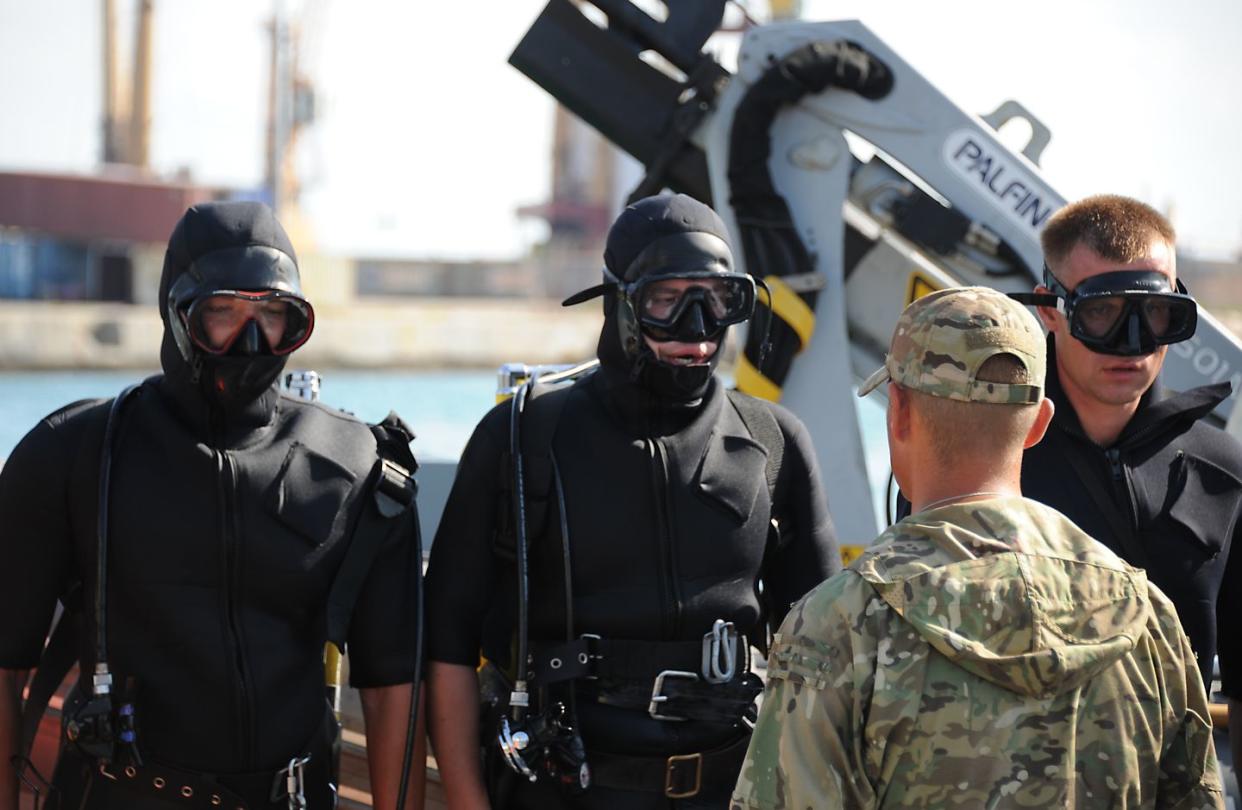‘Several Hundred Kilos’ of Explosives Caused Nord Stream Gas Pipeline Leaks. Is Russia to Blame?

The Nord Stream 1 and 2 natural gas pipelines have suffered damage, and authorities suspect sabotage.
Natural gas normally carried from Russia to northern Europe has been discovered bubbling to the surface in international waters.
The CIA warned Germany, the European destination for the two lines, there could be attacks on gas pipelines as early as this summer.
Two gas lines delivering Russian gas to Europe were reported damaged last week and sabotage is the prime culprit. Two underwater explosions were reported in the vicinity of the controversial Nord Stream 1 and 2 gas pipelines, and an overflight by a Danish F-16 fighter jet confirmed evidence of a huge natural gas leak into the Baltic Sea. On Sunday, the Danish Energy Agency stated that the leaks finally stopped.
✈ Don’t miss any of our best-in-class military and defense news. Join our squad with Pop Mech Pro.
The incident began on September 26 when operators of the Nord Stream 2 pipeline noticed that the pressure had suddenly dropped from 105 to just 7 bars. (A bar is a unit of measure in the metric system used to describe pressure; one bar is equal to Earth’s atmosphere at sea level.) The Nord Stream 2 pipeline, although completed and partially filled with gas, never became operational. Germany, the landfall for the pipeline and the primary intended recipient for the gas, halted its imminent activation when Russia invaded Ukraine earlier this year.

Nord Stream 1—in use, but throttled by the Russian government as a result of NATO support for Ukraine—also registered a pressure drop.
Along with the two pressure drops, Swedish and Danish seismic monitoring stations recorded two explosions. An expert at the Swedish National Seismic Network stated there was no doubt the explosions were set off underwater, as the data showed the shock waves bouncing off the bottom of the ocean and then refracting upward. One had the magnitude of a 2.3-scale earthquake, and each took place near one of the two pipelines. The explosions likely correspond to “an explosive load of several hundred kilos,” Denmark and Sweden say in a letter to the United Nations Security Council.
Se video og fotos af gaslækagerne på Nord Stream 1 og 2-gasledningerne i Østersøen på https://t.co/pj96CN7CDB: https://t.co/7bgt8TljaH #dkforsvar pic.twitter.com/I1zEPaBLYO
— Forsvaret (@forsvaretdk) September 27, 2022
A Royal Danish Air Force F-16 fighter jet dispatched to one of the sites recorded a large disturbance in the water above one of the pipelines, apparently fed by a large amount of gas that originated below. The Danish Air Force reported on its website that “Nord Stream 1 has two leaks northeast of Bornholm, Nord Stream 2 has one leak south of Dueodde.”
Both pipelines start in Russia, pumping natural gas from the Bovanenkovo gas field in western Siberia, then running under the Baltic Sea to Germany. In the Baltic, the pipelines enter the territorial waters of Russia, Germany, and Denmark. They also cross the Exclusive Economic Zones (EEZs) of Russia, Finland, Sweden, Denmark, and Germany. EEZs differ from territorial waters in that the country claiming an EEZ has dibs on economic development there, but it cannot legally bar foreign ships—including warships—from that zone.
Germany’s Economy Minister stated the leaks were the result of targeted attacks on infrastructure and ruled out an engineering or material flaw, Reuters reports. The Swedish and Danish governments believe the leaks were caused by deliberate action, even sabotage. On Friday, President Joe Biden also called the attacks a “deliberate act of sabotage.” Germany’s Spiegel news magazine reports that the U.S. Central Intelligence Agency warned Berlin this summer of possible attacks against natural gas pipelines.
Russia was immediately suggested as a perpetrator—it’s used its leverage as a natural gas supplier to the rest of Europe as an economic weapon. Most recently, Moscow turned off the supply of gas to Nord Stream 1 for “maintenance” and cut the amount of gas sent by 40 percent. These moves are widely seen as retaliation on NATO countries, including Germany and Denmark, who have provided arms and other support to Ukraine. One possible motive would be to pressure NATO countries, facing a freezing winter, to stop sending aid to Ukraine; Russia could gain further concessions by agreeing to repair the damaged lines.

Undersea warfare expert HI Sutton, commenting on Twitter, notes that the Soviet Union had a considerable underwater spy capability during the Cold War, with Russia inheriting that capability. Russia has kept up that tradition with midget submarines and spy submarines like the Belgorod, but Sutton doesn’t believe these could have been used in the incident.
Instead, he thinks it’s plausible that naval Spetsnaz (Russian special forces) divers could have been responsible, or autonomous underwater vehicles in Russian service.
Russia’s war in Ukraine has not gone well, forcing it to take increasingly desperate action, including a mobilization effort that is sending tens of thousands of poorly trained civilians to levy depleted forces in Ukraine. NATO’s aid to Ukraine—especially anti-tank missiles, artillery, and anti-ship missiles—has been spectacularly effective. Russia must end NATO military support for Ukraine to have any chance of winning, but it cannot take on NATO militarily. Yet, the attack on Nord Stream may have been an indirect military action against NATO. Whether or not there is any direct evidence of Russian meddling remains to be seen, pending an inevitable investigation.
You Might Also Like
